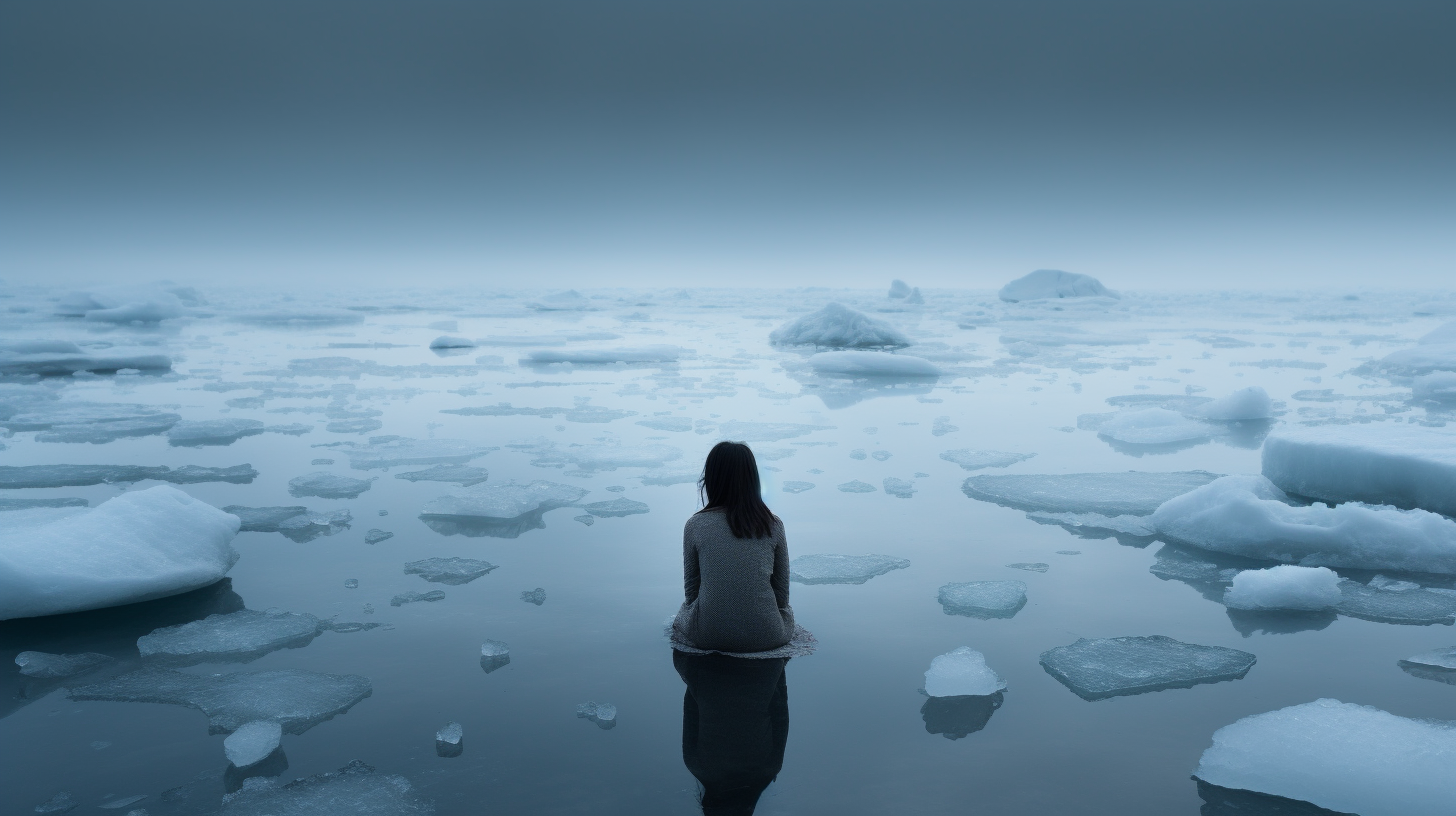The Arctic realm, once a symphony of cracking icebergs, the chorus of wildlife, and the percussive blizzards, now eerily quiet. What was once an impenetrable fortress of ice and snow is surrendering to an insatiable warmth, heralding a global change — a change permanent and irreversible, like the echo of a melody that once defined the polar expanse, now hushed by the stifling blanket of human-induced climate change.
In the past, explorers and scientists would tell tales of the Arctic’s serene, yet intimidating beauty. The massive glaciers, they’d say, were the Earth’s crown jewels, a testament to the planet’s climatic equilibrium. But such descriptions belong to history books, the present tells a different story—the silence of desolation where an icy kingdom once stood.
Our latest journey to the North Pole reveals a truth both sombre and unsettling: the ice is retreating faster than any model predicted. Through the eyes of the few polar bears that remain, one can sense the vanishing of a world they have ruled since time immemorial. Their paws, designed for the slippery challenge of hunting on ice, now wander mostly on bare rock and tundra, searching for a sustenance that is as ephemeral as the fading frost beneath them.
Sea ice serves not merely as the milieu for a multitude of Arctic dwellers but as a critical global thermostat. As the white icecap diminishes, so does the Earth’s ability to reflect sunlight, further exacerbating the warming phenomenon. What we witness is not merely a regional disaster but a harbinger of a global cascade of tipping points.
This is not just about polar territories; the effects ripple through global weather patterns, manifesting in hurricanes and droughts that spare no corner of the globe. Glaciologists and ecologists alike now throw around phrases like ‘point of no return,’ validating what was once speculated with chilling certainty.
As the ice disappears, so too does the culture and lore of indigenous communities, whose very existence is interwoven with the ice. Their ancestral knowledge — reading the ice for cues about weather, navigation, and survival — are becoming obsolete, their way of life tragically slipping into the annals of history.
Even in this muted world, there is a dystopian beauty: the forlorn landscapes, the resilience of life adapting in unexpected ways, the sublime horror of witnessing a transformation so profound. But is there beauty in desolation? In solitude? One might argue it is beauty tinged with despair, a contemplative acknowledgment of what is lost.
Our duty as witnesses to this silence is not only to document but also to instill an unwavering consciousness of our shared responsibility. While the dystopia unfolds around us, devoid of the hopeful fiction that humanity might emerge victorious against climate change in the Arctic, the stark message remains clear: action is overdue.
In remembering the vibrant life that once thrived among these icy citadels, we may never again hear the ancient ice chorus in its full splendor, but we can choose to act with a voice that is equally powerful and profound. For in the silence of the Arctic’s demise, we find our collective voice, a plea for a world where the requiem for ice is not the final piece in Earth’s great symphony.
